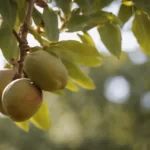Peonies, with their lush foliage and majestic blooms, are a favorite among gardeners and flower enthusiasts. However, getting these beautiful flowers to open and bloom can sometimes be a challenge. This guide is designed to help you understand the nuances of peony care, providing practical tips and techniques to encourage your peonies to flourish and display their stunning blooms.
Peonies
Peonies are perennial plants known for their large, fragrant flowers that come in various shades. They typically bloom in late spring to early summer and can live for decades if well-cared for. The key factors that influence peony blooming include:
- Variety: Different peony varieties have varying bloom times and requirements.
- Age: Young peony plants may take a few years to start blooming as they establish themselves.
- Environmental Conditions: Peonies thrive in specific conditions which, if not met, can affect their blooming.
Patience is crucial with peonies, as these plants often take time to mature and produce flowers.
Preparing the Environment
Creating the right environment is essential for peonies to bloom:
- Sunlight and Location: Peonies need a sunny location with at least six hours of direct sunlight daily. They can tolerate partial shade, but too much shade can reduce blooming.
- Spacing and Air Circulation: Ensure peonies are spaced adequately to promote good air circulation, which is essential for preventing fungal diseases.
- Soil Preparation: Peonies prefer well-drained soil with a neutral to slightly alkaline pH. Amend the soil with compost or well-rotted manure to improve its quality.
Planting and Care Techniques
Proper planting and ongoing care are vital for encouraging peonies to bloom:
- Planting Depth: Plant peony tubers no more than 2 inches below the soil surface. Planting them too deep can prevent blooming.
- Watering and Fertilization: Peonies require regular watering, especially during dry spells. Use a balanced fertilizer in the spring to promote healthy growth.
- Mulching and Winter Care: Apply a layer of mulch to conserve moisture and protect the roots. In colder regions, extra winter protection may be needed.
Encouraging Blooms in Established Plants
Even well-established peony plants can sometimes be reluctant to bloom. Here are some strategies to encourage flowering:
- Pruning and Deadheading: Regularly prune your peonies to remove dead or weak stems. Deadheading, or removing spent blooms, can encourage the plant to focus its energy on developing new buds.
- Adjusting Care Practices: Review and adjust your watering and feeding routines. Over or under-watering and fertilizing can affect blooming. Peonies benefit from a low-nitrogen, high-phosphorus fertilizer to promote blooming.
- Dividing Overgrown Plants: Over time, peonies can become overcrowded, which may inhibit blooming. Dividing the plants every few years can rejuvenate them and encourage more flowers. The best time to divide peonies is in the fall.
Troubleshooting Common Issues
Sometimes, despite your best efforts, peonies may still struggle to bloom. Here are some common issues to look out for:
- Too Much Shade: While peonies can tolerate partial shade, too little sunlight can significantly reduce flowering. Consider relocating the plant to a sunnier spot if necessary.
- Improper Planting Depth: Peonies planted too deep often fail to bloom. The top of the root ball should be no more than 2 inches below the soil surface.
- Disease and Pests: Fungal diseases and pests can stress the plant and affect its ability to bloom. Regularly inspect your peonies for signs of disease or pest infestation and treat them promptly.
Advanced Tips and Tricks
For those with stubborn peonies, or for gardeners looking to maximize their blooms, here are some additional techniques:
- Growth Regulators: In some cases, using growth regulators can help encourage blooming. However, these should be used cautiously and as a last resort.
- Bloom Boosters: Fertilizers labeled as bloom boosters, which are high in phosphorus, can sometimes help. However, it’s important to use them according to the instructions and not to over-fertilize.
Conclusion
Encouraging peonies to bloom can be a rewarding challenge for any gardener. By understanding the specific needs of these beautiful plants and implementing the right care techniques, you can increase your chances of seeing their stunning flowers each season. Remember the key strategies:
- Ensure Adequate Sunlight: Peonies need plenty of sunlight to bloom profusely.
- Plant at the Correct Depth: Avoid planting peonies too deep, as this can inhibit flowering.
- Provide Proper Nutrition and Watering: Balanced fertilization and regular watering are essential for healthy growth and blooming.
- Regular Maintenance: Pruning, deadheading, and dividing overgrown plants can rejuvenate them and encourage more blooms.
Gardening with peonies requires patience, especially as these plants can take a few years to establish and start blooming. However, the spectacular display of flowers they provide is well worth the wait.
Enjoy the process of nurturing these magnificent plants and take pride in the vibrant blooms that result from your care and attention. The beauty and satisfaction that comes from growing peonies are unmatched, making them a cherished addition to any garden.



